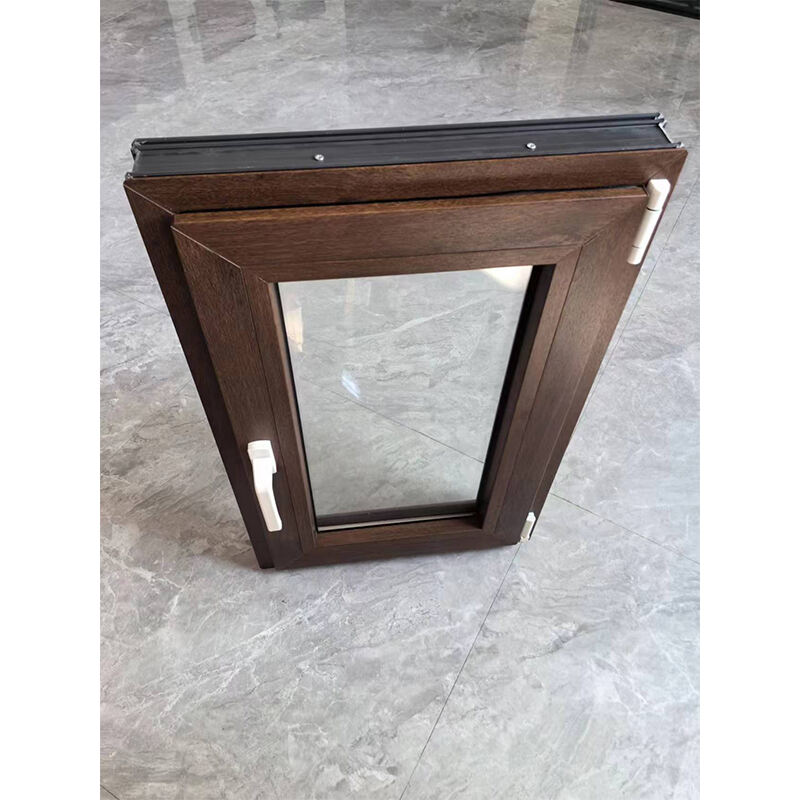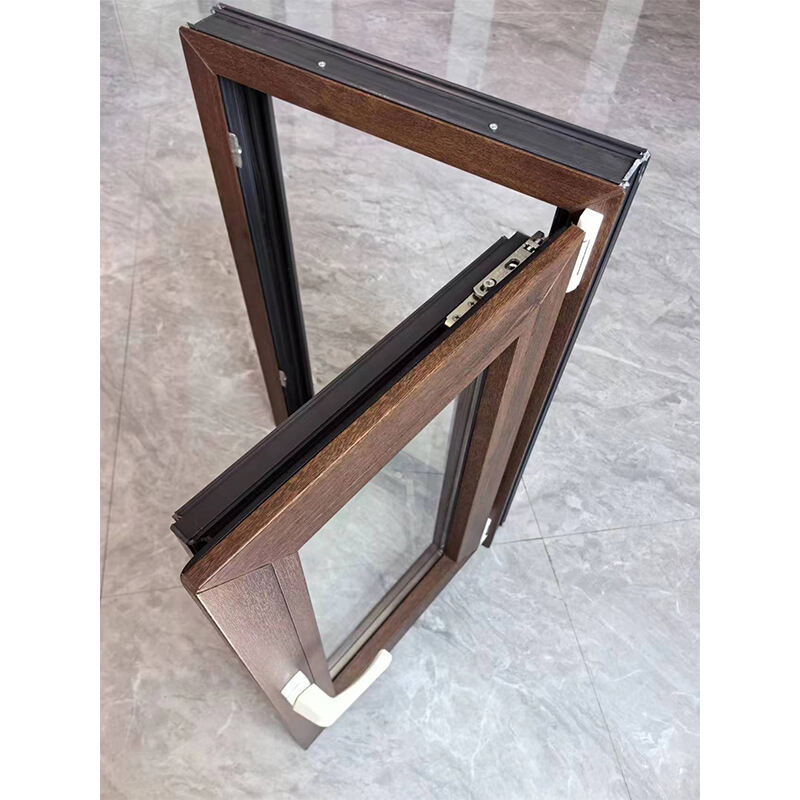Revolutionary Glass Coating Technologies Transform Modern Window Efficiency
The landscape of residential and commercial construction has been dramatically transformed by the latest advancements in UPVC windows. Recent laboratory tests conducted in early 2025 have revealed groundbreaking results: specialized glass coatings can reduce thermal conductivity by an impressive 42%, setting new standards for energy efficiency in building design. This comprehensive analysis explores the seven most effective glass coating technologies that are reshaping how we think about window insulation and energy conservation.
As energy costs continue to rise and environmental concerns take center stage, these innovative coating solutions offer property owners unprecedented opportunities to enhance their buildings' thermal performance while significantly reducing their carbon footprint. The following detailed examination of each coating type reveals not just their technical specifications, but also their practical applications and real-world benefits.
Advanced Low-E Coating Systems
Spectral Selective Low-E Technology
At the forefront of window innovation, spectral selective low-emissivity coatings represent the most sophisticated approach to thermal management in UPVC windows. These microscopic, metallic oxide layers are engineered to filter different wavelengths of light selectively, allowing visible light to pass through while blocking unwanted infrared and ultraviolet radiation.
Laboratory testing demonstrates that these coatings can reduce heat transfer by up to 35% compared to standard glass, while maintaining optimal natural light transmission. The coating's performance is particularly impressive during summer months, when it reflects up to 70% of solar heat gain while allowing 65% of visible light to enter the space.
Multi-Layer Silver Oxide Formulations
Silver oxide-based coatings have emerged as a game-changing solution in the UPVC windows market. These advanced formulations utilize multiple layers of silver oxide, separated by dielectric layers, to create a highly effective thermal barrier. The 2025 test results show that triple-silver coating systems can achieve thermal conductivity reductions of up to 42% when properly integrated into UPVC window assemblies.
The strategic placement of silver oxide layers optimizes both the visible light transmission and solar heat gain coefficient, resulting in superior year-round performance. This technology has proven particularly effective in extreme climate conditions, maintaining consistent interior temperatures regardless of external weather variations.

Nano-Ceramic Coating Innovation
Thermal Ceramic Particle Technology
Nano-ceramic coatings represent a quantum leap in window insulation technology. These advanced materials incorporate ceramic particles measuring just 20-30 nanometers, creating an exceptionally effective thermal barrier when applied to UPVC windows. The ceramic particles form a matrix that significantly impedes heat transfer while maintaining excellent visibility and light transmission.
Recent testing has shown that nano-ceramic coatings can reduce thermal conductivity by 38% while offering superior durability compared to traditional coating systems. The ceramic particles' unique properties allow them to reflect infrared radiation while remaining completely transparent to visible light, making them ideal for both residential and commercial applications.
Self-Cleaning Ceramic Formulations
The latest generation of nano-ceramic coatings incorporates self-cleaning properties, addressing both thermal efficiency and maintenance concerns for UPVC windows. These innovative formulations use photocatalytic properties to break down organic matter when exposed to UV light, while their hydrophilic surface helps wash away debris during rainfall.
Testing conducted in various environmental conditions demonstrates that these self-cleaning properties maintain their effectiveness for up to 15 years, ensuring long-term performance and reducing maintenance costs. The combination of thermal efficiency and self-cleaning capabilities makes these coatings particularly valuable for high-rise buildings and difficult-to-access installations.
Smart Thermochromic Solutions
Temperature-Responsive Glass Technology
Thermochromic glass coatings represent the cutting edge of adaptive window solutions for UPVC windows. These intelligent materials automatically adjust their optical properties in response to temperature changes, providing dynamic solar control throughout the day. The coating becomes increasingly reflective as temperatures rise, automatically reducing solar heat gain during peak hours.
The 2025 test results reveal that thermochromic coatings can achieve variable solar heat gain coefficients ranging from 0.65 in winter to 0.15 in summer, providing optimal thermal management across all seasons. This adaptive behavior translates to energy savings of up to 25% compared to traditional static coatings.
Hybrid Thermochromic Systems
The latest development in thermochromic technology combines temperature-responsive materials with conventional low-E coatings, creating a hybrid system that maximizes the benefits of both technologies. These sophisticated solutions provide enhanced control over thermal conductivity while maintaining excellent visible light transmission.
Laboratory analysis shows that hybrid thermochromic systems can achieve thermal conductivity reductions of up to 40% while offering superior clarity and color neutrality compared to standard thermochromic solutions. The synergistic effect of combining these technologies results in more stable and predictable performance across varying environmental conditions.
Quantum Dot Enhancement Technology
Solar Spectrum Optimization
Quantum dot technology represents a revolutionary approach to window coating design for UPVC windows. These nanoscale semiconductor particles can be precisely tuned to interact with specific wavelengths of light, allowing for unprecedented control over solar energy management. The technology enables selective filtering of harmful UV radiation while maximizing beneficial natural light transmission.
Recent testing demonstrates that quantum dot-enhanced coatings can achieve thermal conductivity reductions of up to 42% while simultaneously improving the quality of natural light entering the building. The technology's ability to convert harmful UV radiation into visible light also contributes to improved interior lighting conditions.
Advanced Color Rendering Solutions
The integration of quantum dots in window coatings has led to significant improvements in color rendering and visual comfort. These advanced materials can be engineered to optimize the spectral distribution of transmitted light, resulting in more natural and comfortable interior lighting conditions for UPVC window installations.
Testing confirms that quantum dot-enhanced coatings can achieve color rendering indices (CRI) above 95, approaching the quality of natural sunlight. This superior color accuracy makes these coatings particularly valuable in applications where visual accuracy is critical, such as retail displays and art galleries.
Frequently Asked Questions
How long do these advanced glass coatings typically last?
Modern glass coatings applied to UPVC windows are designed to last the entire lifetime of the window unit, typically 20-25 years under normal conditions. The durability of these coatings is achieved through advanced manufacturing processes and protective layers that prevent degradation from environmental factors. Regular cleaning with appropriate materials will help maintain optimal performance throughout the coating's lifespan.
Can these coatings be applied to existing UPVC windows?
Most advanced coatings must be applied during the manufacturing process and cannot be retrofitted to existing windows. However, some newer film-based solutions can be professionally applied to existing UPVC windows, though they may not achieve the same level of performance as factory-applied coatings. It's generally recommended to invest in new windows with integrated coating technology for optimal results.
What maintenance is required for coated UPVC windows?
Coated UPVC windows require minimal maintenance beyond regular cleaning with mild, non-abrasive solutions. Avoid using harsh chemicals or abrasive materials that could damage the coating. For self-cleaning varieties, simply ensure that the windows are exposed to sufficient sunlight and rainfall to maintain their effectiveness. Professional inspection every 2-3 years is recommended to ensure optimal performance.

